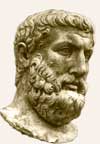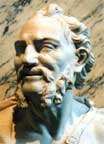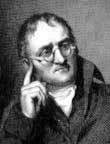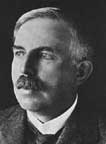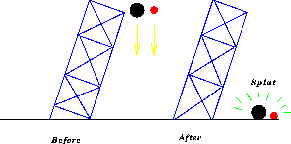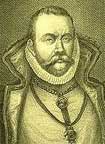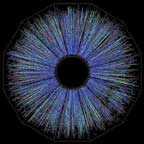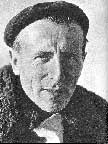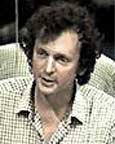 |
||||||||||||||||||||||||||
|
THE BIG PICTURE
|
||||||||||||||||||||||||||
| After the fall of Rome, the Christian church saved civilisation from total chaos. For over a thousand years, the Christian church defined the purpose of life. Church doctrine taught that the earth is in the centre of the universe with Heaven above and Hell below. You had one lifetime on earth, which determined whether you would afterwards live forever in bliss above with God in Heaven or be tortured eternally below with the devil in Hell. And the only way you could get into Heaven was to submit yourself to the often-changing dictates of the church leaders. The church leaders forbade any direct contact with God. You had to go to them for all things religious. If you didn’t believe in all the church taught, you were threatened with excommunication, social rejection and eternal damnation. During the years of the inquisition, you were tried by the church and, if judged guilty, turned over to the civil authorities for torture. Many were burned at the stake for daring to have an individual opinion. The Cathars were a classic example of church suppression. With the rise of science, blind belief in church doctrines declined. Discoveries in physics irrefutably demonstrated that the earth rotated around the sun which was just one of an uncountable number of stars in the sky. Imagine how insecure this new knowledge made the people! Although church doctrine had been complicated and repressive, it had provided a complete picture of the universe and why we are here. It provided emotional security. When this was abandoned, the people didn’t know what to believe. They needed to know what is going on and why we are here. People turned to science and technology in the hope that these would provide them with the big picture of why we are on earth and our purpose here – what we are supposed to do. Science promised to give us an accurate picture of the working of the universe, free of superstition and dogma. However, the church was still powerful and succeeded in limiting scientific investigation to the physical world. They retained control and forbade challenge to the church’s exclusive right to all matters spiritual. Science went to work discovering the laws guiding the behaviour of the physical world. Progress was made. Discoveries in chemistry and physics allowed us to control and exploit the environment. With biology, we learned about the organs of the body and how to control diseases. The scientific view defined the world to be a big machine, ruled by the physical laws of natural, devoid of anything like mind or spirit. While we waited for science to discover the big secrets and reveal them to us, most of human endeavour was aimed toward gathering material possessions. The good life was defined in terms of the looks, status and possessions you could acquire. The spiritual was nearly forgotten and materialism ruled. The goal of the people became to live the good life and make life more comfortable for their children. That we would lose it all at death, and no one knew what happened then, was a very uncomfortable mystery. However, most people just saturated themselves with lust and greed, and pretended that they would live forever. This denial of death has resulted, among other things, in the "old person’s home" in which we hide our old and dying relatives "out of sight – out of mind". Science has made incredible progress. We have conquered many diseases. We can predict the weather with some accuracy. We have split the atom and put a man on the moon. We have learned to produce vast amounts of energy and put it into every household. We have explored and mapped the world. We have built great nations. We have built amazing systems of communication. We can store and transmit vast amounts of information swiftly. However, with our exclusively material focus, this progress has come at a huge cost. We have exploited our environment almost to the level of irreversible destruction. In simple terms, in our madness for ever more toys and power, we are trashing our home, the earth. Clearly the materialistic focus has gone far enough. Further and we will lose much of the life on this planet. |
||||||||||||||||||||||||||
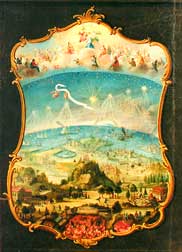 |
||||||||||||||||||||||||||
Before the discoveries in physics made in the middle ages, people believed that they lived upon a flat earth between Heaven above and Hell below. When discoveries in the field of physics collapsed belief in this "triple-decker universe", there was still a long time lag before the common people understood the implications of the new view of the universe. Since physics does have such a potent effect upon the consciousness and beliefs of humanity, let us look into a bit of the history of physics. Then we can perhaps look into the implications of modern physics that humanity as a whole have not yet comprehended. This may offer us new and novel solutions to many of our personal and social problems. Remember, you don’t have to understand the chemistry of aromatic substances in order to correctly add some vanilla extract into the batter of your banana nut bread. Similarly, you don’t have to understand the science described in this section to correctly apply what it implies to the job of integrating spiritual principles into your daily habits and thereby better living the spiritual life. For those whose minds like puzzles and who desire greater understanding of the workings of our world, the science described here will provide much food for thought. For all, the implications derived from modern discoveries in the field of physics offer a new world view with the potential of assisting us to come into a better relation to our world and to each other. It is time for the mechanistic world view, the one in which the earth is a dead thing separate from ourselves that we can limitlessly exploit for profit, to be replaced with a more life-affirming world view. Just like the physics of Newton’s time led to the mechanistic worldview, the physics of today, when understood, can generate a holistic, life-affirming worldview and new personal and social behaviour based thereupon. The story is vast and only a small part of it will be considered here. Those who want to pursue this topic in greater detail are directed to the article, A Change in World View: From Newtonian Concepts to Quantum Mechanics and Chaos Theory. This article is available on the internet at http://www.joyousworld.com/health/ak/worldview.html. It is quoted from Applied Kinesiology, A Training Manual and Reference Book of Basic Principles and Practices by Robert Frost, pp 39-51. |
||||||||||||||||||||||||||
|
||||||||||||||||||||||||||
Because of increasing popular belief in the scientific method and every harder to deny observations and results of experimental inquiry, Church policy was gradually forced to change and embrace the new worldview. Even still, it took a long time before the common human came to know of and accept it. Acceptance the new worldview created a vast change in the state of consciousness of humanity. In this light, let’s consider the more recent discoveries made in the field of physics and see if we can similarly update our own worldview. Might there be just such huge leaps of consciousness still for us to make to catch up with the latest discoveries in physics? Have we unknowingly chosen to be just as blind as those who watched Galileo’s famous experiment at Pisa? In the twentieth century, physical science has made startling new discoveries. Like Democritus, we believe that basic building block of physical reality is the atom. However, Rutherford discovered that the atom does have internal structure. The atom consists of a nucleus of protons and neutrons with electrons orbiting it. In fact were the nucleus of an atom the size of a grain of sand, the first orbiting electron would be several football fields away. That means that what we think of as solid is by far mostly space. |
||||||||||||||||||||||||||
|
||||||||||||||||||||||||||
Could this discovery from physics also be true with animal and human behaviour? It does appear so. In a Harvard University experiment, behavioural researchers were presented with two groups of rats. They were told that one group was bred to be especially intelligent and the other group were rather stupid rats. The scientists were asked to run the rats through the experimental mazes and to determine how much faster the intelligent rats learned. As the researchers expected, the intelligent rats learned much faster – about 25% faster. Then came the rub: Both groups of rats were from the same breeding group. The scientists had been told a lie. The only factor that made the so-called intelligent rats more intelligent was the expectation of the scientists. A similar experiment was carried out in a schoolroom. Teachers were told that a group of new students were especially gifted with intelligence. At the end of the year, these students had the highest marks. However, in reality before this year, they had only been average students. The teachers expected more of them and they got it. In the physical world, with animals and with humans, what you expect tends to be what you get. It appears that to a degree greater than ever before believed, we create the world we experience with our expectations. What do the results of these scientific experiments imply? In animal and human behaviour as in the behaviour of electrons, the universe tends to give you that for which you are looking. It seems to mould itself around your expectations. We live in a very responsive universe within which we are an indivisible interacting part. This is great news! It implies that we cannot just heartlessly exploit others or the earth for personal profit without disastrous consequences. There are no separate "others" or separate "earth". We are inextricably connected with everything we perceive, perhaps with everything that is. If we expect others to hurt us, they probably will. If we expect others to love and respect us, they probably will. This makes great sense of Einstein’s answer to the question, "What is the most important question for humanity today?" He answered, "Is the universe a friendly place". If we expect that it is, we will be generating forces that will assist it to become so for us. We create the world we experience, not only individually but also socially. The group shared beliefs of races and nations generate powerful formative fields of energy. We are trained to accept and support the beliefs of our parents and of our culture. The social patterns extend through many generations and have a powerful effect upon how cultures interact with one another. Fear, hatred and expectations of violence can and do cause feuding to extend through centuries of time. Clearly, humanity has not yet learned and embodied the truth implied by modern science – that we live in a universe that tends to give us more of that which we expect. |
||||||||||||||||||||||||||
|
||||||||||||||||||||||||||
Logic is likely valid. If not, we need a whole new mathematics and philosophy. If number 2 is the invalid culprit, then the world we perceive is only that way because of our perception of it. What we call reality only comes into existence as a result of our perception. This sounds like the Toltec belief: That the world we perceive is a creation of our minds. Their awakened members contend that when they move their assemblage points, they perceive totally different realities. If number 3 is wrong, then information can travel faster than light as assumed above. Perhaps it can’t. But if it can’t, then number two is incorrect which means that our world is much less "objective" and "real" than most imagine! It would be more accurate to state that the world as you know it comes into existence as a result of your act your observation. Either answer is very mysterious and wonderful. Could it be that parts of the universe are in constant contact with one another instantaneously, no matter how distant from one another? This sounds like a scientific proof of the unity of all existence. Or perhaps reality as we experience it has no existence in and of itself. It is generated by our personal and social acts of observation. Whichever one of these two (or perhaps both) is the case, we are in a far more amazing universe than most imagine. Let’s look at a few more mysteries of modern physics. Particles and anti-particles are spontaneously created in the vacuum of space and just as mysteriously disappear. That’s right. In the middle of nowhere, a particle and its opposite anti-particle come into existence. Scientists have observed this. It’s a fact. The anti-particle has just as much anti-mass as the particle has mass. Together they add up to zero. They emerge from nothing. They add up to nothing. But their birth into existence is such a mystery. Is there a whole anti-universe that is equal and opposite to ours? |
||||||||||||||||||||||||||
|
||||||||||||||||||||||||||
Quarks are held together by the mysterious gluon which is not a thing at all. It has no rest mass. It carries the mass of the proton in the form of energy. Any yet, gluons are not things as defined classical mechanics. Like photons that make up light, gluons have no rest mass. They are never at rest. They exist only in their dance of interaction with quarks. And all this is boiling around like a lightning storm at near the speed of light all within the proton with a diameter of about 0.1 trillionth of an inch. So all these quarks are coming into and out of existence. Just one thing is certain. There are three more quarks than anti-quarks in every proton. It appears that the only reason our universe physically exists at all is that there are more quarks than anti-quarks. Otherwise, were it to come into existence, it would just as easily collapse into nothingness before any of the mystery and drama of life had time to develop. Now here is a real mystery. We all know that energy levels decrease as you get farther away from the source of the energy. Sitting near a fire feels and is hotter than when you are further away. This is common experience. It turns out that within the proton, this basic law of nature functions backwards! Why does the proton stay together? With the incredibly turbulent forces in the nucleus, why don’t the quarks just fly away from each other? It turns out that the force exerted by gluons upon quarks gets stronger the further away the quarks get from each other! This behaviour has exactly the opposite effect than every other force ever observed. All other forces get weaker, the further away you are from their source. This observation is absolutely opposed to the laws of mechanistic, materialistic science. As mentioned, new discoveries in physics eventually change the way we see our world. Imagine what a change it was when it was proved that the earth circles the sun. This discovery caused the collapse of the "triple-decker universe" with Heaven above and Hell below the earth. No longer were humans the centre of everything, but rather inhabitants of one planet of many circling one of innumerable stars in the sky. You don’t have to understand all the new physics described here. It’s only presented here to give you a glimpse of the new view of our universe. Much of it is still beyond the grasp of our finest minds. We are still in the process of discerning what these new discoveries imply. One thing is for certain: Our universe is no longer seen as dead matter made up on little hard solid atoms and obeying the laws of classical mechanics. It is rather viewed as a dynamic field of energy, coming into and out of existence in the most mysterious ways. Everything is a vibrating field of light energy and that includes you! Some scientists are even coming to the point of saying that in its workings, the universe appears to be intelligent. Perhaps the whole universe is the physical body of one great intelligence. It would be more than presumptuous for us to think that we could conceive of the true nature of this great being, the Source of all. That would be like a bacteria believing that it correctly comprehends human nature. But we as humans can conceive of possibilities still beyond our grasp and can evolve greater capacity to understand. We can apprehend that which we cannot yet comprehend. What might these strange but true discoveries about the nature of physical matter imply? Perhaps in the discovery that we are inseparable from the world, is implied that we are "Godletts", still in the nymph stage and growing toward greatness that we cannot even conceive. Now let’s consider how some of the new discoveries in physics have inspired and generated new understandings in other fields. |
||||||||||||||||||||||||||
|
||||||||||||||||||||||||||
Research on the effectiveness of prayer and affirmations support the idea that we have a far greater influence upon our environment than was formerly believed. What you think and what you expect do much to define the reality that you experience. You are not a victim of life, you are a co-creator. It appears that the evolution of humanity on earth has not been a random process. Throughout evolution, the Source has been the evolving ever more complex species of life on earth. The goal of evolution seems to be to create beings that can "wake up" in consciousness. In humans, consciousness awoke from the instinctual animal level to self-consciousness, the awareness that allows you to say, "I am". Though the scientists are not yet in agreement about this, it appears that dolphins and a few other species of animals are also self-aware. Self-awareness means that you can do things that you think up yourself. This means consciously choosing how to act rather than reacting instinctually. However, with this breakthrough in consciousness came something new: free will. This has been a two-edged sword. It is wonderful and terrible. Freedom from instinctual reactions means also that people can do horrible things that animals never do. Humans, in the infancy of self-awareness, have made a pretty awful mess of the earth. And human national cultures are on a similar stage to children playing in the backyard. One says, "It’s my backyard so if I don’t get to play, no one else will either." Another says, "I have the ball and bat so I get to play and I define the rules of the game." Another says, "I’m bigger than you so if you say I can’t play, I’ll beat you up." |
||||||||||||||||||||||||||
|
||||||||||||||||||||||||||
It’s quite important that we do not judge the behaviour of our nations too harshly. They are not evil, just immature and not yet well educated. They are like children playing, harsh and brutal at times but capable of social evolution. Nations, like children (and adults!), still need to learn caring adult behaviour. It’s important that each one of us conceive of ourselves, of all of humanity, as a species emerging from its childhood and moving toward more mutually supportive, adult behaviour. Remember, what you visualise and expect has a powerful effect upon the world you experience. Your vision will assist all of us to grow up in consciousness. Relevant quotes: "Science sans conscience n'est que ruine de l'âme." (Science without a conscience is nothing but the destruction of the spirit)— Rabelais (1483-1553). Science is essentially a compartmentalisation of all the knowledge humans have gained about the external world through our senses. Dharma is the compartmentalisation of all the wisdom gained by humanity. Therefore, science and dharma compliment one another. As the Isa-Upanishad puts it, "He who had both spiritual wisdom (Dharma) and secular knowledge (science) together keeps death at bay through the latter and experiences immortality through the former." "Dharma without science is superstition. Science without dharma is intellectual madness." - Swami Chinmayananda "Science without religion is lame, religion without science is blind." Albert Einstein |
||||||||||||||||||||||||||
| The story continues: Taoism - as lived by Poo and Piglet |
